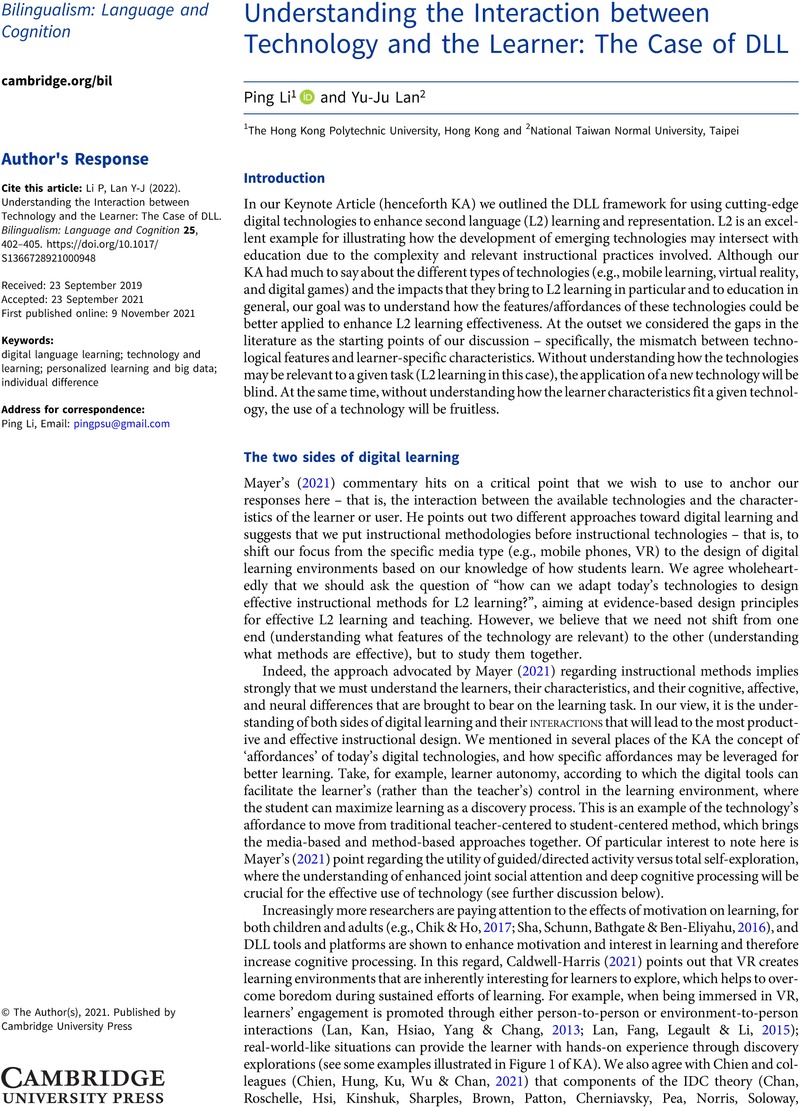Crossref Citations
This article has been cited by the following publications. This list is generated based on data provided by Crossref.
Getman, Yaroslav
Phan, Nhan
Al-Ghezi, Ragheb
Voskoboinik, Ekaterina
Singh, Mittul
Grósz, Tamás
Kurimo, Mikko
Salvi, Giampiero
Svendsen, Torbjørn
Strömbergsson, Sofia
Smolander, Anna
and
Ylinen, Sari
2023.
Developing an AI-Assisted Low-Resource Spoken Language Learning App for Children.
IEEE Access,
Vol. 11,
Issue. ,
p.
86025.
Gu, Chanyuan
Peng, Yingying
Nastase, Samuel A.
Mayer, Richard E.
and
Li, Ping
2024.
Onscreen presence of instructors in video lectures affects learners’ neural synchrony and visual attention during multimedia learning.
Proceedings of the National Academy of Sciences,
Vol. 121,
Issue. 12,





